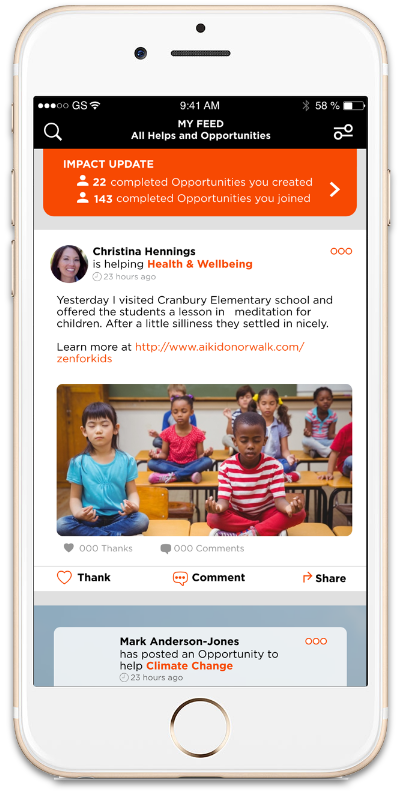How to Rally Your Network Around a Donation Drive
By: Maria Minsker
There’s no better feeling than giving to those in need and many of us have our favorite charities to support. But if you’ve ever thought about organizing your own donation drive but didn’t know where to be begin, you’ve come to the right place. Whether you’re making the most of seasonal closet transitions to keep the homeless warm during cold months, collecting resources to help a community after a natural disaster, or gathering school supplies for kids in underserved areas, your donation drive can bring a smile to the face of someone going through a very difficult time.
Though it may seem like a daunting undertaking, there’s a tried-and-true recipe for success. From coming up with the idea for your drive, to showing gratitude for participation, these five steps will help you rally your network around a worthy cause and make a difference for someone this season.
1. Fine-Tune Your Focus
A cold weather clothing drive is a great initial idea for your donation effort, but to generate the most excitement and energy, get specific about the items you’d like to collect. Giving your drive a fun, unique theme—such as “Sweaters For Seniors” or “Hats For Vets”—will more effectively grab donors’ attention and generate more participation in the long run.
“It’s tempting to assume that you’ll get more donations when you use a general term like ‘clothing,’ but that’s not always the case. A catchy-sounding drive will be easier to promote to a wide network,” Tina Cincotti, founder of Funding Change Consulting, says. And be clear about what you can’t accept, if anything. If you’re collecting personal hygiene products like toothbrushes or diapers, for example, specify that these need to be new and properly packaged.
2. Find the Right Partner
Organizing a drive is hard work—don’t do it alone. Identify a trusted organization that will accept the donations you collect and disperse them honestly and effectively. “One of the key elements to look for is fiscal responsibility. Does the organization you’re considering partnering with openly disclose how they handle funds and donations? They should share that information on their website, or be willing to provide it upon request,” Cincotti says.
Reputation goes a long way. Opt for working with groups that have been vetted by established third parties like The Better Business Bureau or ThatHelps. New York Cares, CARE and the International Rescue Committee are just three examples of organizations of the highest caliber, providing donations to homeless individuals, refugees, and others in need.
3. Inform and Motivate
Now that you’ve narrowed down your focus and chosen a partner, it’s time to get the word out. Choose a start date and duration period for your drive and create an event on a social platform like ThatHelps or Facebook. “Making the event public will maximize awareness and, potentially, interest,” Cincotti says.
But casting a wide net should be just part of your outreach. Think about your full network and the various groups within it that would be most interested and likely to participate. Looking for toy donations? Email fellow parents at your child’s school—they’re sure to have some extra teddy bears.
To ensure your message resonates, use visuals such as graphics, videos and photos, and be sure to motivate your audience. Include photos of the veterans in your community that you’d like to help, or video messages from kids in a local hospital who will receive holiday gifts from your drive. “This is what your effort is all about. Seeing the faces of the people that benefit makes it worthwhile for donors,” Cincotti says.
4. Stay Goal-Oriented
Depending on the length and turnout of your drive, staying organized can prove difficult. To keep yourself accountable, use a calendar and set goals. “Tell yourself: I need to collect 50 coats within two weeks, or 100 toys over the span of one month, and work to meet or exceed those goals,” Cincotti suggests.
Be sure to also collect contact information (such as email addresses) from drive participants. This will be critical when you need to thank them later, and when you need to rally them again for your next event.
And pass on the philanthropy bug—recruit a friend or family member to help if you start feeling overwhelmed.
5. Show Gratitude
Doing good feels good, and receiving simple gratitude makes it feel even better. After your drive is complete, reach out to participants and thank them for their help, regardless or whether they donated or simply helped spread the word. Be specific—share how many items you were able to donate, who you were able to help and what you’d like to do next.
Good breeds good, Cincotti says, so encourage your network to maintain the momentum of your drive and keep participating in similar events, or organize their own. “There’s no limit to how much help is needed,” Cincotti says.


